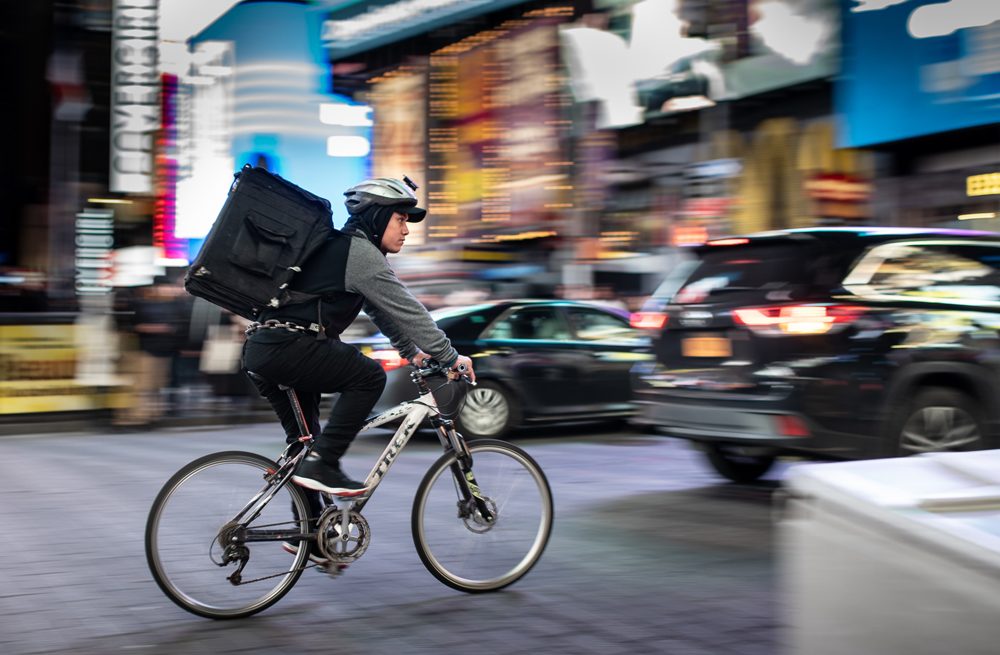What the Dine-In Sector Can Learn from the Just Eat Merger
3 Min Read By Gavin Peters
In yet another indicator of the sheer scale of technology’s impact on the food delivery market, two industry giants, Just Eat and Takeaway.com, have recently announced that they have agreed to a £9bn merger.
It’s already been a somewhat turbulent year for Just Eat, with a number of mixed reports about the company’s performance and ability to compete in the long-term with the likes of Deliveroo and Uber Eats. Many analysts were less than optimistic about Just Eat’s long-term competitiveness after Amazon’s investment into Deliveroo earlier this year, and further alarm bells were rung when H1 results showed a 98 percent drop in profits from the same period in 2018.
In the last few years, as consumer behavior has rapidly evolved alongside the growth in delivery services.
However, as with any fast-growing tech company, initial profits are unlikely to be a good indicator of future success, and often merely reflect that the company is investing back into the business to grow its market share. And with orders up over 20 percent, and revenues up 30 percent in the same period, that certainly seems to be the case here.
And now, with the news of the merger with Takeaway.com, it appears that Just Eat (or perhaps Just Eat Takeaway.com) is doing everything it can to retain its position as an industry behemoth – which makes sense in a rapidly growing and ever-more competitive sector that was worth over £8bn in the UK alone in 2018.
But all this talk of multi-billion dollar mergers between “food delivery giants” would perhaps have seemed like madness just a few years ago. The fact that Deliveroo was only founded in 2013, and Uber Eats launched in 2014, brings home just how fast technology has disrupted the takeaway and delivery market.
So, what can the wider restaurant industry learn from this disruption?
Consumer Behavior Can Flip Almost Overnight
In less than five years, ordering takeaway from an independent mobile platform has gone from being a curiosity to the norm. Whilst the technology has been there for a while, a tipping point has been reached in the last few years, as consumer behavior has rapidly evolved alongside the growth in delivery services. A whole generation will now order takeaway without ever thinking about contacting a restaurant brand directly.
Anyone accumulating deep customer insights through mobile will have a huge competitive advantage.
Restaurants, cafés and bars must now be preparing for the next big shift in consumer behaviour. In-restaurant mobile ordering hasn’t yet become the norm in the same way as it has for delivery, but with the technology now available to offer a seamless Order & Pay service, and the likes of Starbucks and Weatherspoons making early gains in the space, the eat-in sector could be set to follow. Those unprepared for the shift will lose out to digital-first brands.
Don’t Ignore the Data
Just Eat, Deliveroo and Uber Eats have acted like all successful tech giants – they’ve been laser-focused on understanding customers through data, and evolving their offering based on analytics. As aggregator platforms, they have all accumulated a wealth of consumer insights, and used it to roll out new services, testing and learning at every step of the way. As this technology enters the eat-in sector, anyone accumulating deep customer insights through mobile will have a huge competitive advantage.
New Restaurant Business Models
It’s almost impossible to predict exactly how the market will change when technology starts taking hold, but it’s a pretty safe bet that new revenue streams and business models will quickly open up and challenge the old. The rise in delivery services has seen the innovators in the market react. In recent years we’ve witnessed a big rise in ghost kitchens opening up, with online-only brands launched to satisfy increasing demand. This will continue, and we’ll see a similar rise in innovation throughout the dining sector.
Don’t be surprised to see successful mobile-ordering only restaurants serving the digitally savvy, time-poor millennial market
Don’t be surprised to see successful mobile-ordering only restaurants serving the digitally savvy, time-poor millennial market – and they won’t need to worry about the legacy of outdated physical point of sale systems or re-working their operational flows.
A Battle for the Order
Many restaurants now have a complicated relationship with the delivery giants. They need access to the marketplace and have seen considerable ROI from becoming part of an online ordering service without needing to implement a new operational set-up themselves.
However, this may come at a long-term price for the brands, as they become detached from the ordering process – allowing the apps to aggregate all the important consumer insight, and relegating themselves to suppliers, in a B2B2C model. This complicated relationship will continue to heat-up, as brands look for more controls of their own online orders, and the delivery giants potentially look to expand beyond the confines of at-home ordering.


